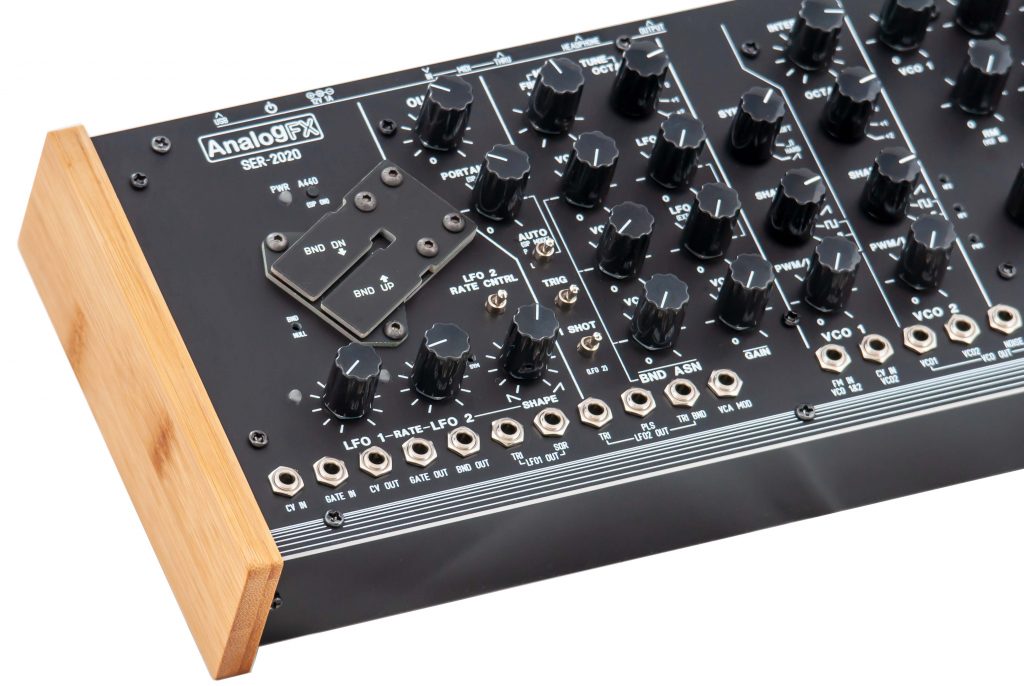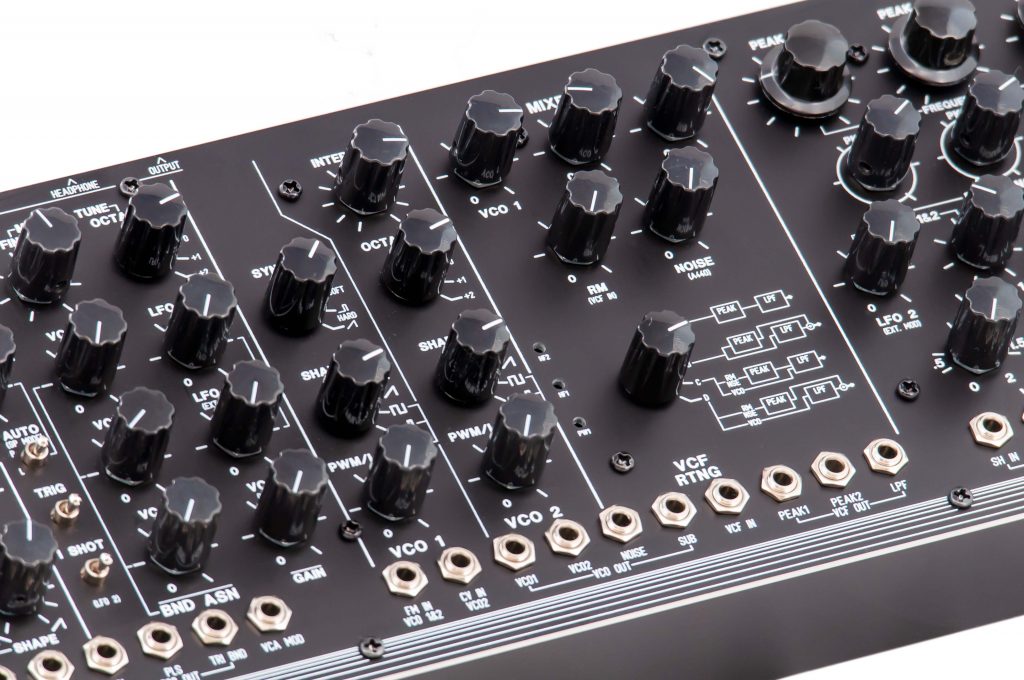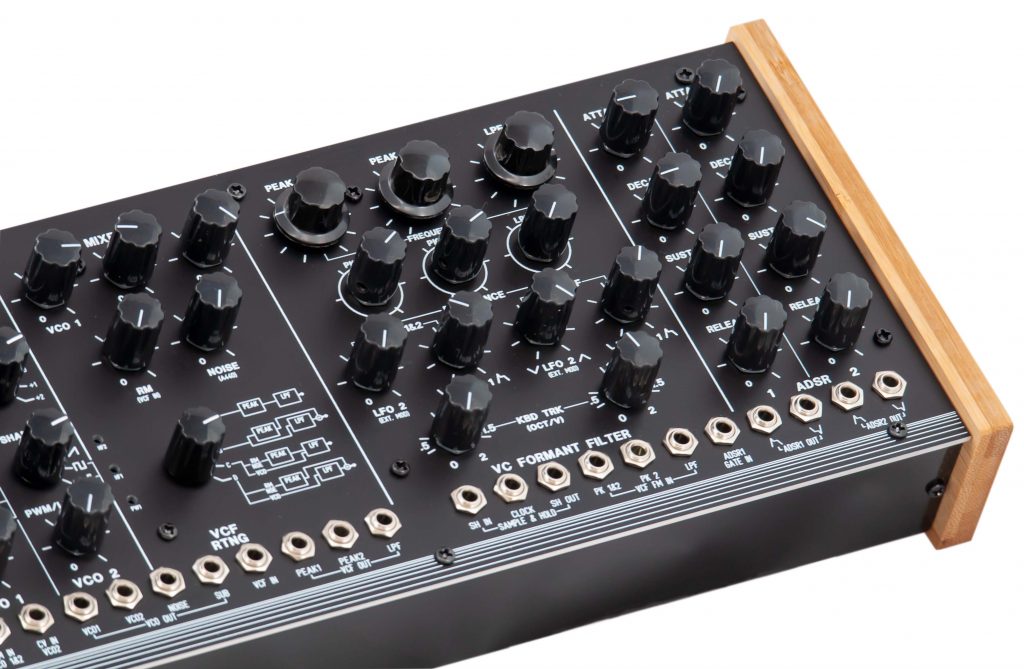Pure analogue power from this throwback synth, featuring an utterly captivating filter section. Greg Scarth finds out what it has to offer.

AnalogFX’s SER-2020 is a throwback. The synth is inspired by the Synton Syrinx, an ultra-rare, ultra-valuable analogue instrument produced in relatively small numbers back in 1983 and 1984. On the surface, it’s mainly quite standard stuff for an analogue monosynth: two VCOs, one with a sub-oscillator, two LFOs, two envelope generators and a patchable semi-modular design. What sets the SER-2020 apart is its unique formant filter section, one of the most impressive analogue filters you’ll find anywhere.
AnalogFX is a very small boutique operation with no connection to Synton other than being based around 100km down the road from Synton’s old headquarters, in the small Dutch city of Deventer. While the SER-2020 draws inspiration from the Syrinx, there are plenty of differences, not just with the introduction of cutting-edge MIDI and MPE control, but also with the inclusion of those semi-modular patch points rather than the fixed architecture of the original synth. There are numerous other tweaks and changes which set the SER apart from the original 80s synth, but it makes sense to judge it on its own merits given that you’re very unlikely to be making a straight choice between the two instruments (not least because original Syrinxes have been known to change hands for prices in the region of £10,000 on the rare occasions they come up for sale). The SER-2020 is reviewed here in its current v2 incarnation, but the v2 is a relatively small update from the first model released in 2020.

Broadly speaking, this is old-school analogue synthesis: no sequencer, no effects, no presets, just pure analogue synth power. On that front, the two CEM3340-based oscillators are the starting point, and they demonstrate the depth and flexibility you can expect to find throughout the SER-2020’s signal path. Both oscillators offer triangle, saw, square and pulse waves, both with pulse width modulation, three sync options on VCO 1, an additional sub-oscillator output, plus ring modulation and a noise source in the mixer section.
The original Syrinx was a keyboard-based synth with fixed signal routing, but the SER-2020 adopts a semi-modular approach. There are also extra controls on the front panel, and more routing options before you even consider the patch points. The patch points themselves aren’t overwhelming – and the synth offers more than enough value even if you don’t particularly want to explore the patching options – but they’re neatly laid out along the bottom of the front panel, corresponding to the sections above. Highlights include individual outputs for the three filter sections (offering some interesting processing options when paired with other synths and modules), a handy sample and hold circuit, and both standard and inverted outputs for the two envelope generators.

The filter is without doubt the key feature of the SER-2020, giving it a unique character and making it something very special. It’s a very unusual three-part filter, based on CEM3350 chips, as used in the rare Crumar Spirit and Rhodes Chroma synths. A 24 dB/octave low-pass filter is paired with two independent formant filters (resonant peak filters), which can be routed in four different ways, a variety of series and parallel combinations which give different results. The net result, whichever routing you opt for, is a filter section which gives the synth a truly unique character. You can keep it simple by just using the low-pass filter if you want, but things get more interesting when you use combinations of filters with different modulation. One of the updates for the v2 model is the introduction of Speech Mode, allowing you to select pre-programmed human voice formants. These can be assigned to MIDI notes, giving easy access to those classic vocal-effect formant filter sounds.
The Syrinx was a quirky synth so it’s no surprise that the SER-2020 has some similar tricks up its sleeve, notably in the form of its expressive capabilities. The obvious starting point here is the unique Touch ‘n’ Bend pad, a split circuit board which generates control signals when you apply pressure to its surface and physically bend it, allowing you to modulate any parameter you choose to patch it into. Two fingers on the Touch ‘n’ Bend pad gives you interesting tactile control over the sound, unlike any other synth interface. It’s unorthodox, but pushes you to explore new territory which you maybe wouldn’t consider with conventional pitch bend and mod wheels. The Touch ‘n’ Bend pad is a throwback to the early 80s, but what’s far more 21st century is the inclusion of MIDI Polyphonic Expression (MPE) control for added expression. The SER-2020 is, of course, monophonic, but MPE still offers excellent real-time control of multiple parameters simultaneously, adding cutting-edge modern expression to what’s broadly speaking a retro synth.
Given how rare the Synton Syrinx is, the SER-2020 certainly isn’t intended as a direct rival to a vintage original. The £800+ price tag buys you a lot of analogue synths these days. You could have a Moog Subsequent 25 or something more esoteric like a Norand Mono, but direct comparisons seem irrelevant with such a unique sounding synth. The bottom line is that the SER-2020 has a completely singular character which makes it stand out as one of the highlights of the current crop of analogue instruments. It’s a retro classic, updated and improved to meet the needs of modern musicians.
Greg Scarth
More info/buy